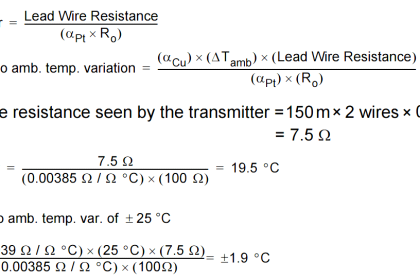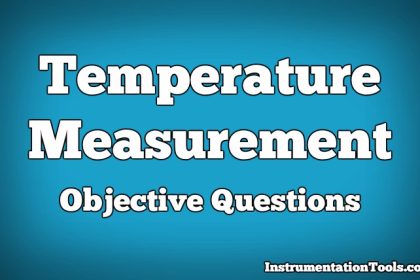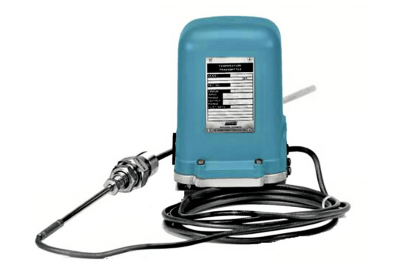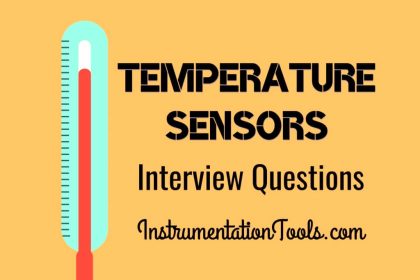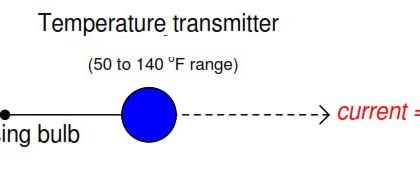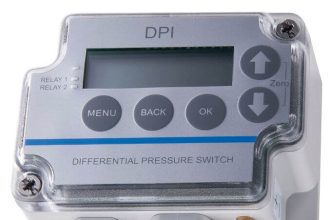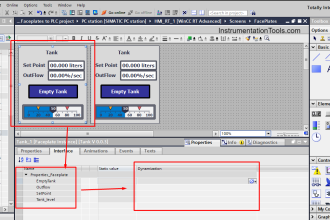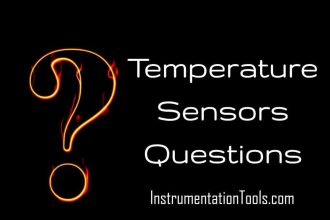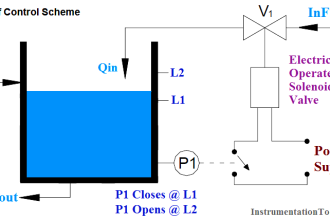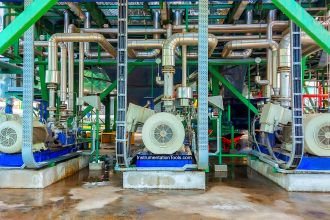A pyrometer is a non-contacting device that intercepts and measures thermal radiation, without making any contact with the radiating body and the process is known as pyrometry. This device is useful for determining the temperature of an object’s surface. Pyrometer is derived from the Greek root „pyro’ which means fire.
Pyrometer
The term pyrometer means a device capable of measuring temperatures of objects above incandescence. Early pyrometers (Filament Pyrometer 1917) were restricted to visual measuring methods only (i.e., the object becomes red hot, it starts emitting radiation). So, only high-temperature measurement is possible with early pyrometers.
But nowadays such pyrometers are also available that can measure temperatures far below the freezing point from a distance and without making contact with the object to be measured. Temperature is the most frequently measured physical quantity that predicts the condition of a product or part of apparatus, both in manufacturing and in quality control. Pyrometer strictly works on the principles of black body radiation.
Here emissivity of the target plays an important role, as it governs how bright the target appears to the pyrometer. Due to its high accuracy, speed, economy, and specific advantages, it is widely used as a standard procedure in many industrial applications.
There are some critical considerations that have to be included for any infrared pyrometer like emissivity field of view (size of the target and distance), spectral response and temperature range, and mounting.
Some of the advantages of non-contact pyrometry are discussed below:
- It records temperature within fractions of seconds (fast response time).
- It does not influence the temperature and material of the target.
- Requires less maintenance and hence a longer lifetime.
- It can measure the temperature of the moving object.
- Measurements can be taken for hazardous or physically inaccessible objects (e.g. high-voltage parts and great measurement distance).
- As it is not in direct contact with the target so high temperature can be measured.
- Being a noncontact technique, it will not tamper with the target mechanically.
Pyrometers Handbook
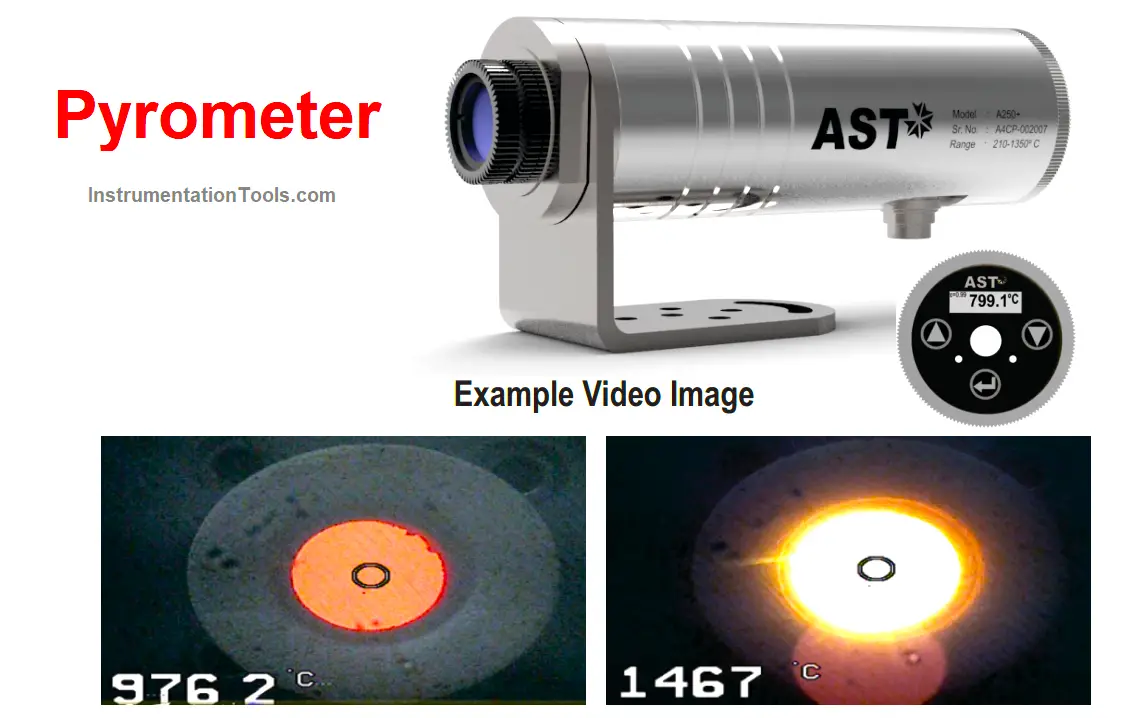
This pyrometers handbook consists of 8 chapters as mentioned in the below table.
| Chapter 1 | Basic concepts |
| Chapter 2 | Pyrometry |
| Chapter 3 | Choosing the spectral range |
| Chapter 4 | Methods for determining the emissivity |
| Chapter 5 | Basic design and construction of pyrometer |
| Chapter 6 | Sources of interference |
| Chapter 7 | Pyrometer types |
| Chapter 8 | Accessories |
Generally, pyrometers can be classified into two categories which are:
- Broadband pyrometers
- Narrowband pyrometers
Broadband Pyrometers
Broadband pyrometers are the simplest and less expensive devices that have a response from 0.3 microns wavelength to an upper limit of 2.5 to 20 microns. The name itself indicates that these pyrometers measure a significant fraction of the thermal radiation emitted by the object. They greatly rely on the emissivity of the surface being measured.
The path to the target must be clear from water vapor, dust, smoke, steam, and radiation-absorptive gases present in the atmosphere, as these can attenuate emitted radiation from the target resulting in inaccurate measurements.
Also, the optical system and sighting window should be clean. High and constant emissivity at longer wavelengths makes these pyrometers suitable for measuring the temperature of organic materials.
Narrowband Pyrometers
There are several other categories in narrow-band pyrometers which are as follows:
- Single color pyrometers
- Ratio-type pyrometers (two-color pyrometers)
- Multi-wavelength pyrometer
Single Color Pyrometers
Single-color pyrometers operate over a narrow range of wavelengths. They are also called single-color pyrometers. The spectral response of these pyrometers is usually less than 1 micron. They are normally used for measuring glass at 5.14 μm. Metals can also be measured as their rate of emissivity is high only in a narrow band.
The spectral response of the particular device depends on the type of the detector used. For instance, the response of a pyrometer with a silicon cell detector is around 0.9 – 1.1 microns. These pyrometers can work on a selected wavelength range with the help of filters. But for this more sensitive detectors and advances in signal amplifiers are required.
Ratio Radiation Pyrometers
A ratio Radiation Pyrometer measures the radiated energy of an object between two narrow wavelength bands and then calculates the ratio of the two energies. This ratio is the function of the temperature of the object. This is also called a two-color pyrometer because the two wavelengths corresponded to different colors in the visible spectrum. Even if the object does not fully cover the spot the output signal will not change.
Also, the temperature measurement is independent of emissivity, so the errors caused by the emissivity variation, surface finish, and energy-absorbing materials (e.g. smoke, smog, water vapor, etc.) between the pyrometer and the target can be minimized or removed. It is used for measuring high temperatures (e.g. molten metal).
Multi-wavelength Pyrometers
A multi-wavelength pyrometer is capable of measuring more than two wavelengths. They are also called spectrophotometers. Here instrument compares all the measured values and then decides where the accurate temperature lies.
Fiber Optic Radiation Pyrometers
Optical pyrometers can be considered a subset of narrowband devices. Fiber optic pyrometers can be classified as wide-band, narrow-band, or ratio devices. These devices use an optical fiber (light guide) to direct the radiation to the detector. The spectral response of these fibers is extended to about 2 microns so it is useful in measuring object temperatures to as low as 100°C.
An optical head, a glass fiber and a signal processing unit together form a fiber optic pyrometer. The optical head does not contain any electronics. It is basically used where the sighting path to the target is not clear (pressure chamber).
Read more about the pyrometers. Download the document from the below table.
| Title: | Pyrometer Handbook |
| Author: | Accurate Sensors |
| Format: | |
| Size: | 1 MB |
| Pages: | 19 |
| Download: | Click Here |
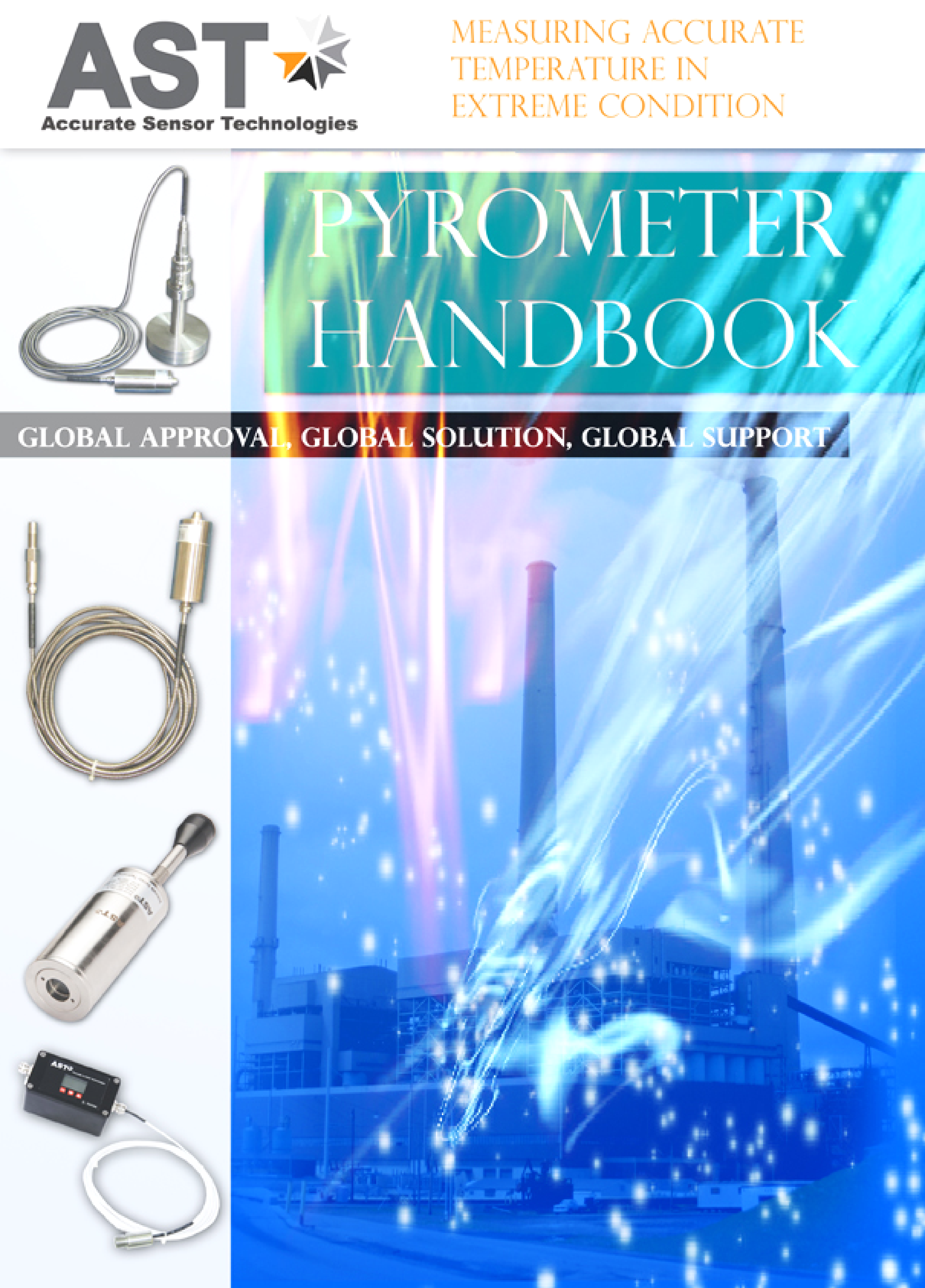
If you liked this article, then please subscribe to our YouTube Channel for PLC and SCADA video tutorials.
You can also follow us on Facebook and Twitter to receive daily updates.
Read Next:
- Electrical Enclosure eBook
- Valve Basics and Sizing Book
- Industrial Control System Guide
- Instrumentation Books Download
- pH and ORP Learning Handbook
